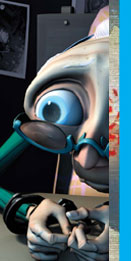教育論文
 フルカンファレンス
フルカンファレンス
 1日券
1日券
世界9カ国の教育者によって17件の発表があります。これらの教育論文は、応募総数43件からピアレビューワーと審査委員会によって厳選されました。 5つの英語のセッションと2つの日本語のセッションがあります。
SIGGRAPH Asia 2009 Education Papers:
Design
Friday, 18 December | 10:45 AM - 12:30 PM | Room 416/417
Session Chair
Mei-Fen Chen
Learning Course for Sensory Interaction
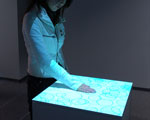
Expressive methods of using media technologies such as computers, digital videos, sensors, and I/O modules have brought about a new phase in art and design. In interactive arts, artworks include feedback on images and audio that responds to viewers' actions. Interactivity is a crucial element for a broad range of studies, including software interface design, product design, and media art, because it produces new relationships between human and things. Students of media art, design, and human science should foster their ability to create and comprehend expressions based on interactivity created by media technology. This preliminary course was developed to meet that need. Course materials include a white wooden box for exhibition and toolkits for creation. The box (50 x 50 x 80 centimeters) works as an interface. It is placed under a projector that is suspended from the ceiling. Sensors inside the box enable the top of the box to interact with viewers. The hardware toolkit includes an original I/O module, various sensors such as a sound sensor and an infrared sensor, and cables. The sensors have a mini-pin plug and a resistor as needed for connecting to an I/O module without soldering. The software toolkit is a library of sample programs using Processing that provide various motion patterns of primitive graphics. For example, small circles move in a straight line, a wave, or a circle with constant speed or acceleration. In addition to understanding how to write programs, students expand and combine them to make their own movement of graphic elements. The toolkits enable students to experiment with how movements of objects interrelate with the sensing of human actions and then create an interactive installation.
Taeko Ariga Koichi Mori Doshisha Women’s College
Dynamics-Based Tools: An Unusual Path to Design Integration
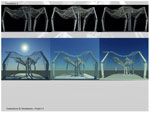
Design, and creativity in general, is as much an intellectual or deliberate act as an intuitive and imaginative process. While most designers naturally recognize this characterization, the digital tools used for design reflect the difference between these two modes of creativity rather than mitigate it. The tools are a collection of narrow and fragmented capabilities, rather than a unified platform for creativity. Consequently, designers are presented with a wide range of tools that often serve a very limited set of problems and stop short of carrying creative ideas throughout the life of a project. In an architectural context, the challenge designers and educators face is how to integrate conceptual design tools with architectural building information (production) software. Interesting early designs are not always feasible architectural structures, while straightforward and buildable structures often fail to capture clients' imaginations. This paper looks specifically at the applicability of special effects software in architectural design. Dynamics-based tools such as inverse kinematics, soft/rigid dynamics, cloth simulations, and particles can and should be used to develop an architectural form. The dynamics-based tools not only introduce generative quality into design by facilitating explorative and accidental form-making, but they also can validate design decisions through the use of simulations and the introduction of physically based parameters, such as shear or tension forces, into design. From an academic perspective, dynamics-based tools enhance the conceptual or visceral understanding of architecture through interactive shaping of a form. Furthermore, these interactive simulations translate into a visually inspired, virtual hands-on experience for students and interns by helping them to develop an intuitive knowledge of architecture.
Andrzej Zarzycki New Jersey Institute of Technology
Exploring Design Solutions Through Online Games
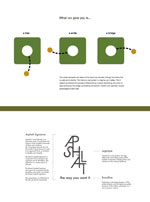
How do famous designers like Kenya Hara and Paul Smith get their inspiration? Paul Smith found inspiration in his collection of objects, and his extensive travels provide a wealth of visual stimuli. Kenya Hara got his from nature. Inspiration can come in any form, from our daily life, the clothes we wear, ancient architecture, or dreams. This paper explores the possibility of using online games as an inspiration to create good design solutions. Online games were selected as the topic for a course at Nanyang Technological University and Massey University because it is close to the hearts of Generation Y undergraduates (in this case, third-year BFA students majoring in visual communication). The course was conducted once a week for 14 weeks. Students were told to use online games as the main stimulation for their design solutions, and they were required to show evidence of the connection between their designs and online games. The results are measured by the students’ design process and the quality of the final design. The important point of this research is not to prove that using online games as inspiration tools is right or wrong. The goal is to help students understand that original design solutions come from our surroundings, not from reference books. In the process, students are encouraged to understand their design process better and recognize that anything can be an inspirational tool. The course should help students find their own special way of creating great design solutions.
Jesvin Puayhwa Yeo Nanyang Technological University
Expressing Contemporary “Japanese-ness” Through Digital Images
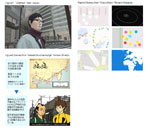
This paper describes an educational environment for university-level visual communication designers that allows them to create digital images related to place-branding and local identity. Today, the visual-culture industry directly influences the reputation of its country of origin. Korean and British strategies provide typical models of how to promote national brands through entertainment exports [Anholt 2008]. Since 2000, the Japanese government also has attempted to promote a new national brand identity through projects such as “Japanesque Modern (J-mark)", which encourages harmonizing traditional aesthetics and features of traditional culture with contemporary sense, materials, or technologies. For several years, I have been thinking about how Japanese designers and artists can apply our traditional culture in contemporary digital art. The aim of this study is to establish a unique expression that we can relate to in modern life by doing something more than just imitating old mannerisms. It introduces basic visual information design to young students by connecting a wide range of historical images, such as ancient pictograms, picture scrolls, and prints, to contemporary media design. As studio work, sophomore-level students are asked to conceptualize and design brands for their hometowns or favorite places using colors, local characters, and cultural events. Then they are asked to design cross-media promotion tools for their brands. The results show that students learn a lot from traditional local culture, aesthetics, and manners, and that they can produce original works by applying them in a new context using digital design.
Tomoko Hatanaka Takushoku University
